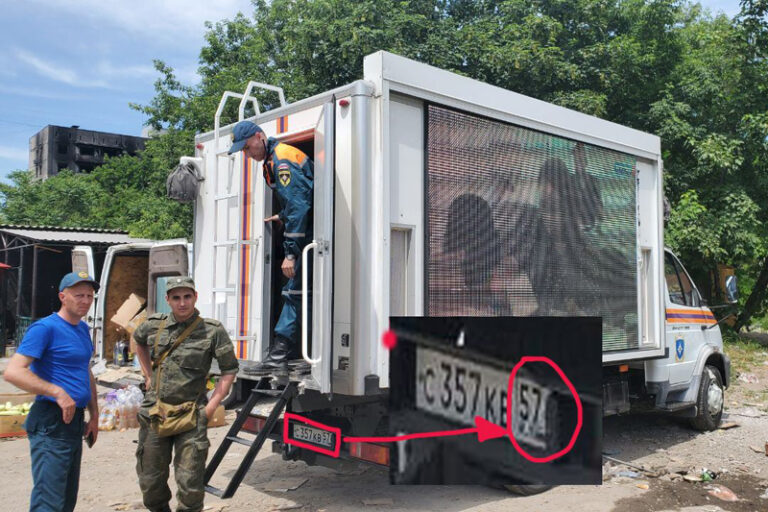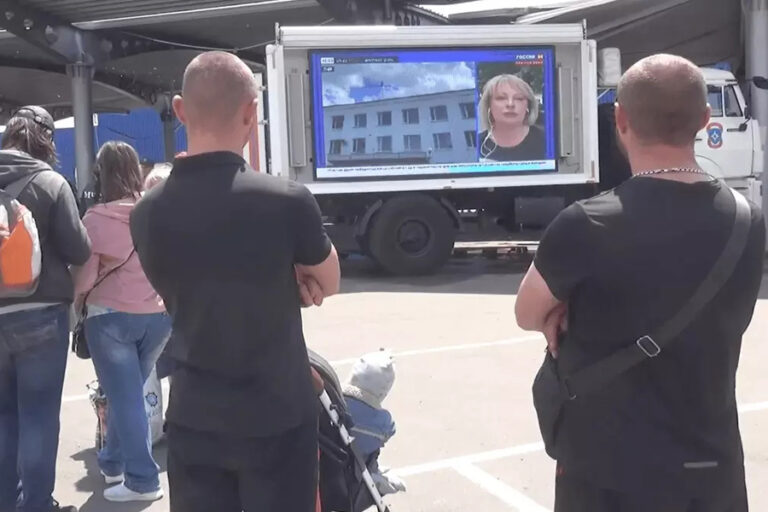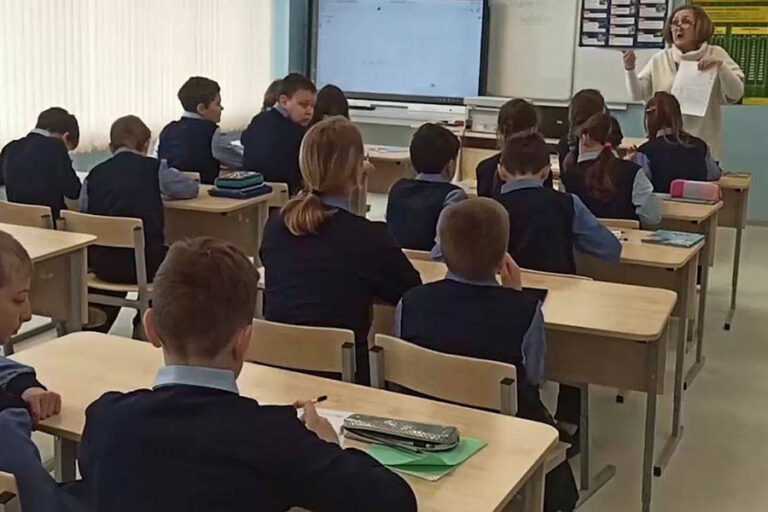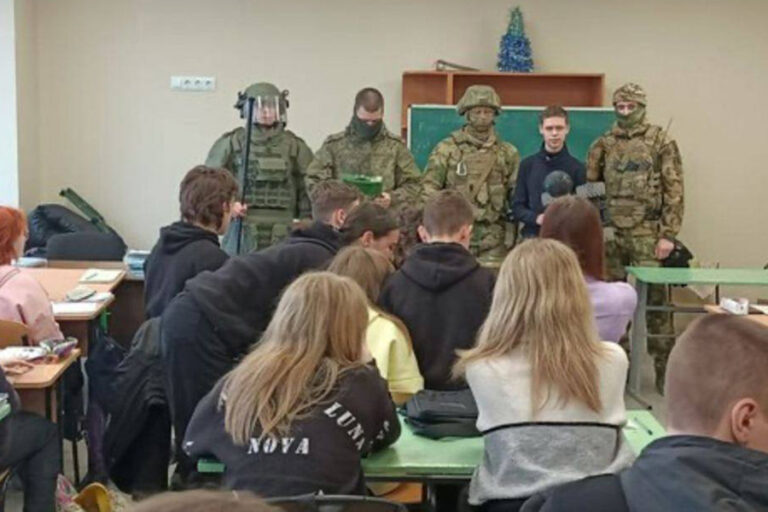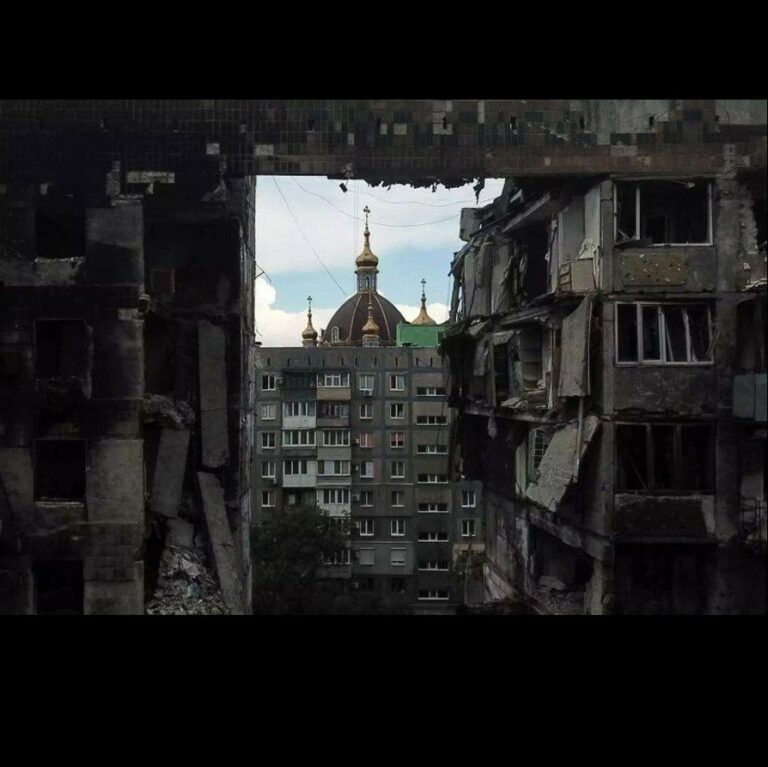
The whole world was watching the siege of Mariupol and Azovstal. The full-scale invasion turned this once-flourishing city with a population of 500,000 into a devastated wasteland occupied by the Russian army, with no more than 100,000 residents remaining. The city found itself in the midst of a humanitarian and ecological disaster. In the Summer of 2022, Russian media started to mention the so-called “reconstruction of Mariupol”. Nothing can stop the Russian propaganda machine, not even the tragedies and humanitarian catastrophe unleashed upon the city’s residents by the occupiers.
Before the full-scale invasion by Russia, the city of Mariupol was an industrial hub and one of the largest seaports of the Azov Sea in Ukraine.
The Russian army, along with insurgents of the so-called Donetsk People’s Republic (DPR), attempted to capture the city back in 2014. Owing to the successful military operation by the Ukrainian Armed Forces the city was quickly liberated, and any further attempts of the Russians to advance towards Mariupol and create a land corridor to Crimea were prevented.
An American veteran and journalist, Nolan Peterson, recollects, “When I first came to Ukraine in 2014, I thought I would be here for two or three weeks. But that summer I was actually in Mariupol. The Russian forces were advancing. And I very vividly remember sitting on a hilltop of Mariupol, watching a tank battle. And I thought to myself, ‘This is crazy! A tank battle! In Europe! In 2014!’”
For years, the city was located just a few dozen miles away from the Russian border and the frontline of the so-called People’s Republics, enduring constant shelling from Russia. All this did not stop Mariupol from becoming a haven for many internally displaced people fleeing from the territories occupied by Russia. Extensive development began in the city — damaged buildings were being rebuilt, local businesses were growing, and so was the infrastructure.
Civilian Casualties in Mariupol and Russian Eco-terrorism
Civilian casualties have become one of the most tragic consequences of the Russian occupation. Preliminary figures reported by local authorities as of the 7th of July 2022 indicate that over 22,000 residents have been pronounced dead, and more than 50,000 Ukrainians have been deported to Russia or the occupied territories of the Donetsk and Crimea regions. These figures are not final, as it is impossible to accurately count the exact number of victims under collapsed buildings or in mass graves and makeshift cemeteries without accessing these territories.
The remaining residents of occupied Mariupol suffer from constant military raids. Those who attempt to leave the city have to undergo Russian filtration camps. Nearly 90% of the city’s residential areas, including hospitals, nurseries, and schools, were destroyed as a result of non-stop shelling by the Russian army. The city’s electric, water and gas networks are severely damaged.
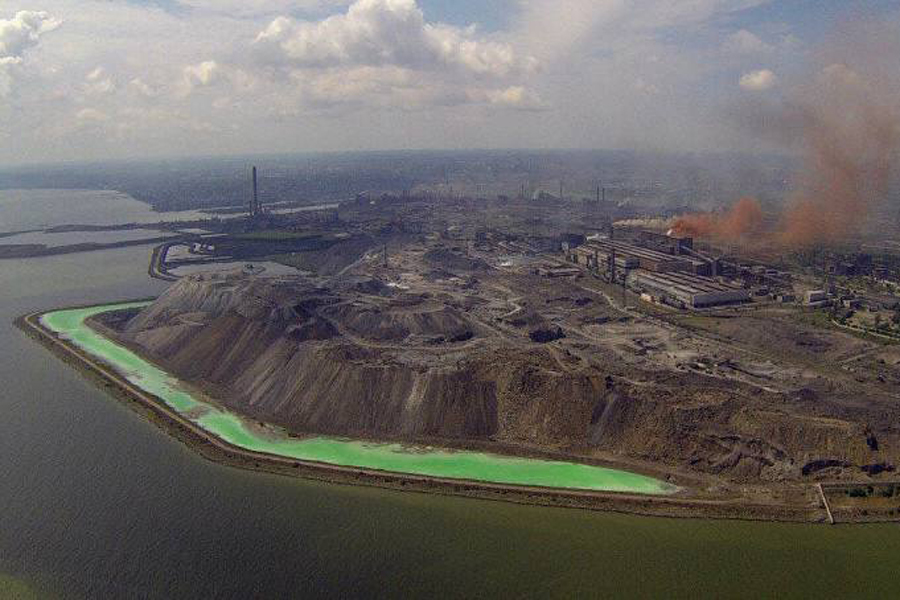
Many environmentalists and public figures declared that Mariupol was on the verge of a humanitarian and ecological disaster back in the Spring of 2022. In May 2022, the official City Council of Mariupol raised an alert regarding the risk of wildlife extinction in the Azov Sea due to the bombardments of Azovstal, which could damage the reservoir containing thousands of tonnes of concentrated hydrogen sulphide.
The release of this substance into the Azov Sea would result in the eradication of its entire flora and fauna. Moreover, the dangerous compounds may spread to the Black and Mediterranean Seas.
Another severe danger comes from the infiltration of cadaveric poison and harmful bacteria into the city’s water system, underground water sources, and rivers that flow into the Azov Sea. The city’s Ukrainian mayor, Vadym Boichenko, in his interview with the BBC in June 2022 reported that the outbreaks of infectious diseases were occurring. He stated that cholera, dysentery and other infectious diseases were spreading in the city while alleging that the Russian occupiers were attempting to conceal this fact.
In the meantime, Mariupol’s seaport has been converted into a military base by the invaders. They exploit it for the illicit exportation of Ukrainian grain and metal. By the end of December 2022, all Ukrainian staff members who refused to collaborate with the occupiers were dismissed and replaced by workers from Russia.
Russian promises of swift reconstruction of Mariupol
From June 2022, Russian media in their reports started to mention the so-called “reconstruction of Mariupol”.
Russian authorities claimed that extensive development was taking place in the city. According to the Ukrainian administration of Mariupol, the reported development is commissioned by Russia’s Ministry of Defence. The project included building residential housing and fortification lines of defence at the same time. This suggested that the housing was intended for the Russian military and their military base supporting personnel.
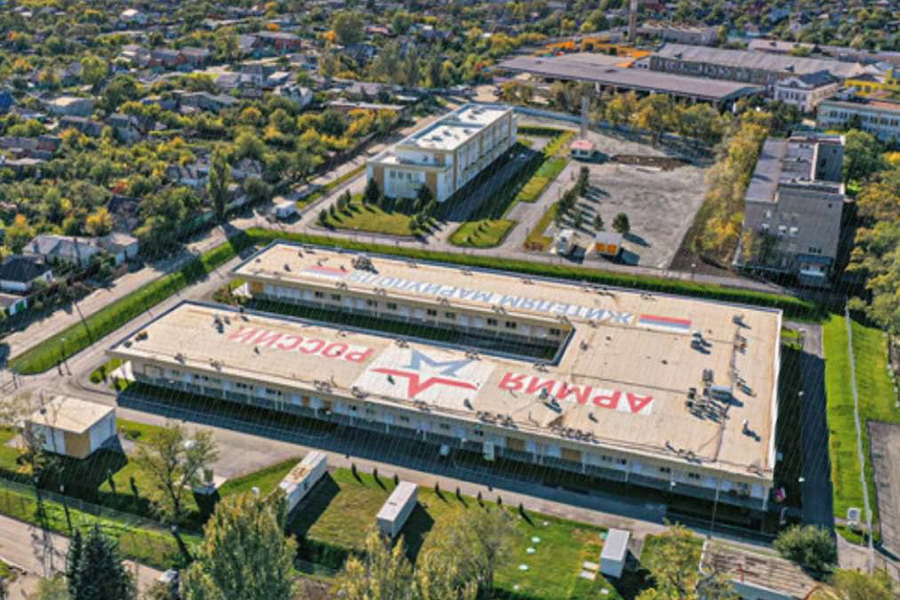
Writing on the rooftop: From Russian Army to the residents of Mariupol
In their article, RadioLiberty Ukraine elaborated on the situation around the development of a new residential area, which, according to the occupying administration, was intended to become a symbol of Russian authority in Mariupol. This development project was awarded to Voyenno-Stroitelnaya Kompania (Russian for Military Construction Company — tr.), which specialises in the construction of military towns.
In his interview, Russia’s Vice Prime Minister Marat Khusnullin announced plans to rebuild Mariupol between 2025 and 2035. Allegedly, the Russian President also ordered the construction of a modern hospital in the city. Khusnullin further discussed the renovation of the city’s historical centre, experimenting with new approaches to parking space planning, and development of local transportation and cycling infrastructure. They even approved a new colour scheme to “give the city its new face”.
In addition to the occupation authorities’ promised construction of large residential areas, Russian propaganda also announced the development of 60 temporary hostel-like modules made out of concrete, which could accommodate up to 8 people. Allegedly, the place would provide all the amenities, including electric power, water supply, heating, and a sewage system. These modules are intended for Mariupol residents whose houses had been destroyed. However, the chosen location for this construction project is deemed unsuitable for living due to infrastructural and ecological concerns.
Petro Andriushchenko, the adviser to the city’s Ukrainian mayor, referred to the buildings constructed by Russia as “concrete chicken coops”. These structures lack bathrooms, and their small windows are situated near floor level. In the Prymorskyi district of Mariupol, the Russian occupiers erected “prefabricated concrete chicken coops”, which they label as “multi-storey buildings”. These buildings have only 266 flats capable of accommodating no more than 600–700 people. The developers have not made any efforts to install heating or gas supply in these new buildings.
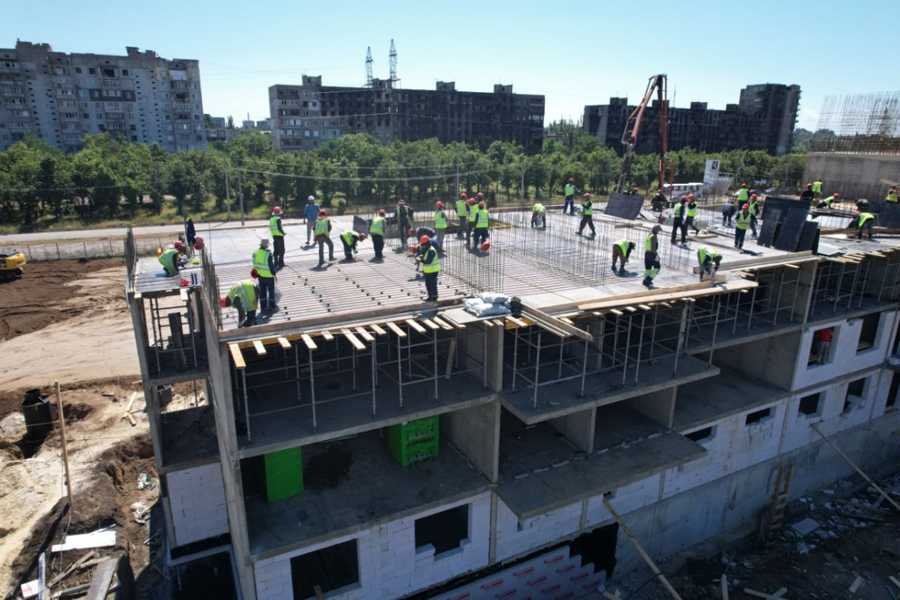
Destroyed buildings next to a new construction area, Mariupol
Petro Andriushchenko also commented on the Russian occupiers’ plans to demolish the damaged buildings and “renovation” of Mariupol, “Development companies from Moscow and St. Petersburg come here. They pay bribes so that intact buildings are classified as ‘in an emergency condition’ and permits for their demolition are granted, allowing them to start their new construction projects. Russia has brought nothing but widespread devastation to Mariupol. Devastation, death, and ruins are the harsh reality of occupied Mariupol”.
Andriushchenko commented on the situation with building materials as well. While Russian contractors devise schemes to steal from the state budget, their employees are also devising ways to steal from themselves. To profit from the shortage of building materials, the Russians steal window frames, heating radiators, and similar items from Mariupol’s residents, only to resell them.
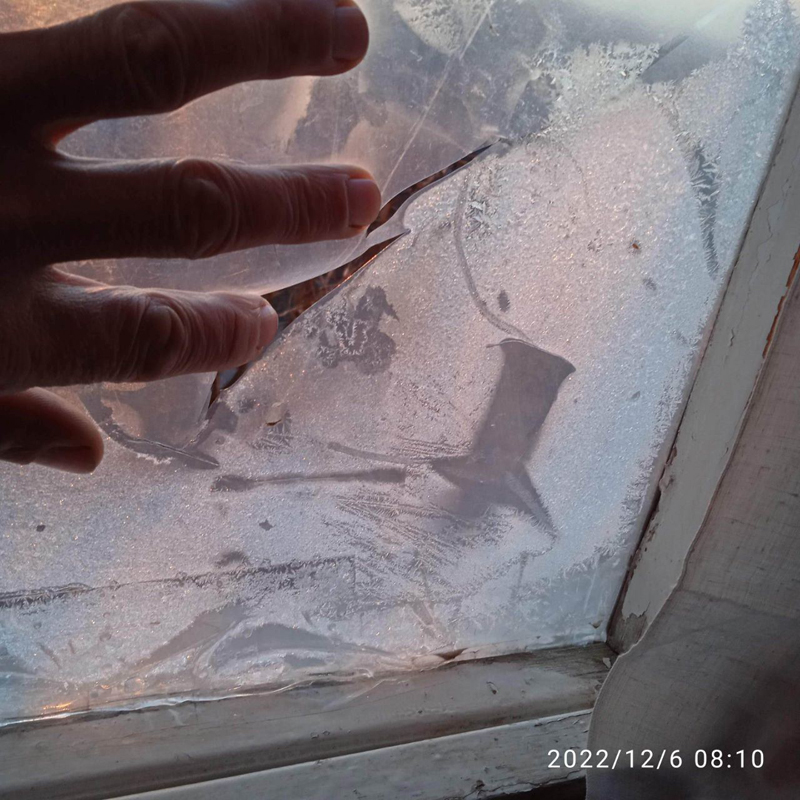
Plastic film instead of window glass, Mariupol, the winter of 2022–2023
Ukraine’s City Council of Mariupol reported that the city’s residents have lived through the winter without heating, “People used plastic film to cover shattered windows. They have no heating and suffer from the cold. The occupying administration does nothing about this situation. The genocide of the civil population of Mariupol continues.”
According to Ukraine’s administration, the only measure attempted by the occupation authorities was handing out portable heaters to the local residents. To get one of those heaters, people had to wait in queues for miles. However, even after enduring such long waits, they had nowhere to plug in the heaters since most households had no electricity.
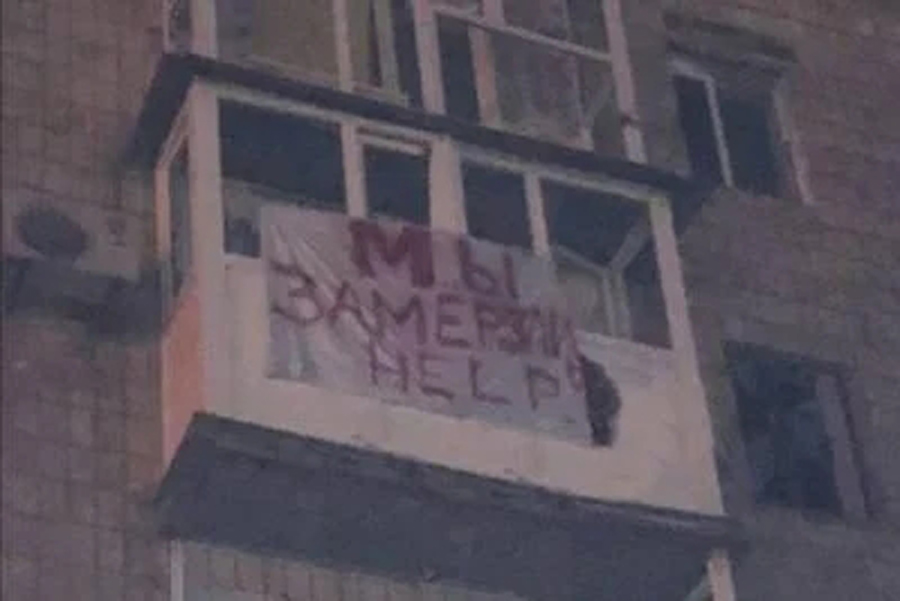
Writing on a balcony in Mariupol, “We are cold. Help”, the winter of 2022–2023.
Even though the occupier’s reports claim that electricity, natural gas, and water supply have been restored, the reality is that the water pipes, central heating systems, and boiler rooms in Mariupol are destroyed. Russia has no plans to restore the gas supply network due to concerns about a possible counter-offensive by Ukraine’s army.
The adviser to the Ukrainian mayor, Petro Andriushchenko, has called the lack of heating during cold winter months “Kholodomor” (a wordplay in Ukrainian, meaning “terror by cold”, with reference to “Holodomor” — ”terror by famine” — tr.). On the 6th of December 2022, he stated that indeed, the occupation authorities had abandoned the city’s residents, leaving them to die from the cold, “I suppose, according to Russia, it’s not the right time for heating. Our sources report that the main reason for the current situation is the lack of funding from Russia’s regional budgets for the current year (2022 — ed.)”.
And while the local residents of Mariupol, who remained in the city despite the occupation, are living in inhumane conditions, the Russian state media continue to spread their propaganda. They have released several documentaries on their national clone of Youtube, showcasing ruins (which they explain as “the results of Ukraine’s bombardments”) and narrating tales of “victory” and “returning Mariupol back to life”, accompanied by heroic music.
Russian propaganda at work in the occupied Mariupol
In his interview with RadioLiberty Ukraine, a representative of Ukraine’s City Council of Mariupol reported that Russian media used footage of the same building construction multiple times. Many of their videos employ close-up filming techniques to showcase residents in front of supposedly newly-built properties. The camera operators deliberately select angles that exclude the damaged apartments and surrounding ruins from the camera’s focus.
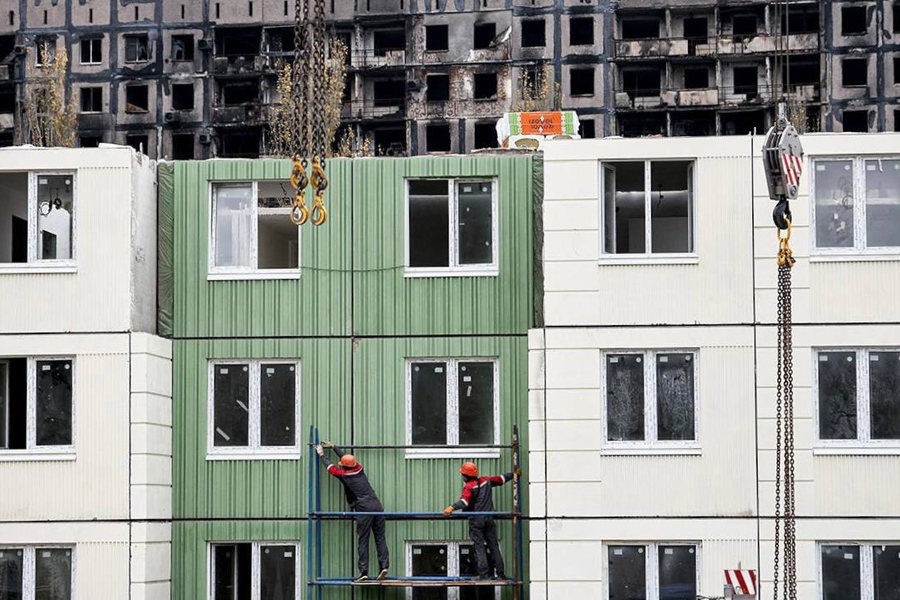
Ruined blocks of flats in Mariupol in the background of the new development area.
Russian propagandists film staged scenes to showcase “the revitalisation of the city”. According to the Deputy Mayor of Mariupol, the Russians were trying to manipulate some of the locals into making false statements that Ukraine’s military had destroyed the city. The occupiers sought to bribe the residents by announcing a registration for financial compensation for those who lost their homes or family members. To apply for compensation, individuals had to claim that their property “had been destroyed by Ukraine’s military” and their loved ones “were killed by Ukraine’s army.” Those who did not provide such statements were denied compensation.
Some residents signed such statements in a state of informational blockade, under threats and unprecedented psychological pressure. This enabled Russia to obtain thousands of written “evidence” on the “atrocities of Ukraine’s army”, which they exploit for their propaganda in the media.
Clearly, the sums of the compensations announced by Russia were unrealistic. To pay $6,000 US dollars per destroyed property and $33,000 US dollars per killed family member, Russia would have to spend no less than $2.5 million US dollars. However, as of 2023, the country’s budget deficit has reached a record level of $56 billion US dollars. Therefore, Russia doesn’t have the funds to support such programmes.
Fabricated statements help Russian media shape the public opinion they need. They emphasise blaming Ukraine’s authorities and the military while portraying their own soldiers as “liberators”.
Ukraine’s Mariupol city administration also reported the use of so-called “zombomobiles” — the automobiles equipped with PA systems that the occupiers have brought to Mariupol. These vehicles broadcast Russian propaganda narratives to the city’s residents. Additionally, the invaders also installed 12 big screens in the streets for the same purpose.
slideshow
Russia uses television as their primary medium to channel propaganda. Petro Andriushchenko shared a post regarding the occupier’s project of rolling out free subscriptions for satellite TV service in the occupied territories. They wanted people to apply for free installation of the equipment. This shocked Mr Andriushchenko, “The expenses for such equipment far exceed those for a heater. But they value propaganda over the heating”.
International media also report the application of propaganda techniques in education, which were observed in Mariupol. The Russians introduced daily sessions of listening to their national anthem. Students are taught using textbooks that include fabricated historical facts about Russia and Ukraine. Propagandist teachers got instructions to ensure the attendance of all students at the schools. However, not all city residents wanted to send their children to schools the Russians had taken over. Families who expressed reluctance were visited by school representatives and armed soldiers as a means of “reminding” them that students must attend school. Parents who persist in their disagreement to send their children to schools can be stripped of parental rights, and children can be sent to boarding and cadet schools in Russia. The state utilises education to instil pro-Russian views and outlooks among students. The occupiers also employ manipulation and intimidation — methods that accompany all of their propaganda activities.
slideshow
According to Petro Andriushchenko, one of the schools was attended by a representative from the occupier’s law enforcement agency. She addressed the children at the New Year assembly, stressing out the negative implications of being an insurgent and encouraging them to report anyone who “engages in the conspiracy” — that is expressing praises for Ukraine. In other schools, the talks centred on the New Year’s celebration of, its traditions, family values, and Russia’s role in this festivity. The main message conveyed was that the Western world is trying to steal the New Year from traditional families, and Putin saved the celebration by invading Ukraine.
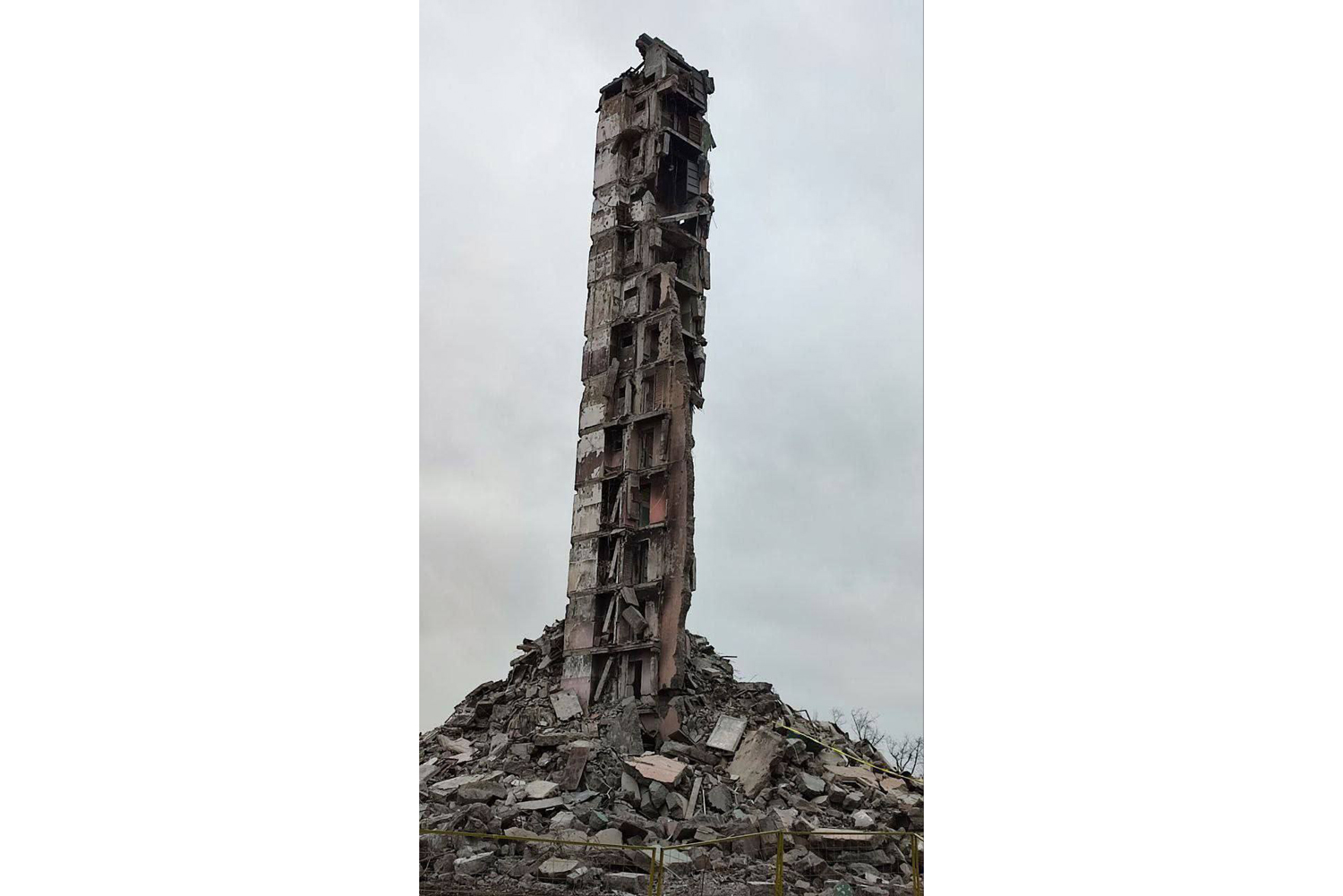
A photo of destroyed block of flats in Mariupol
Russia employs propaganda to assert control over the informational space, shape narratives, and manipulate facts. Through these methods, the aggressor country aims to divert attention from the atrocities it commits. By proclaiming the rebuilding of Mariupol, the occupying authorities seek to conceal the evidence of devastation caused by Russia. Nevertheless, the unity and resilience of the democratic part of the world will enable us to endure until Mariupol is liberated, support its residents, investigate the crimes, and bring the perpetrators to justice.

